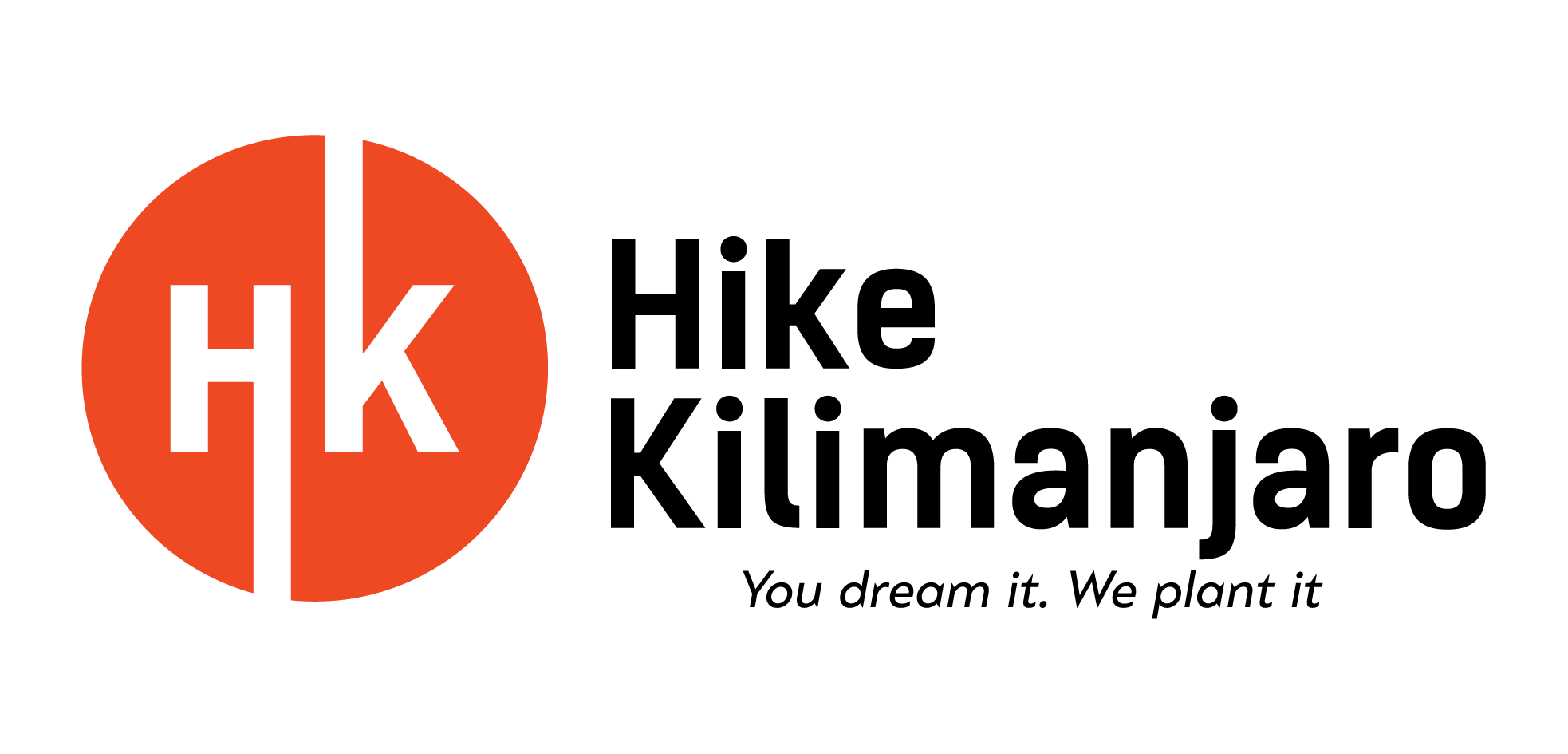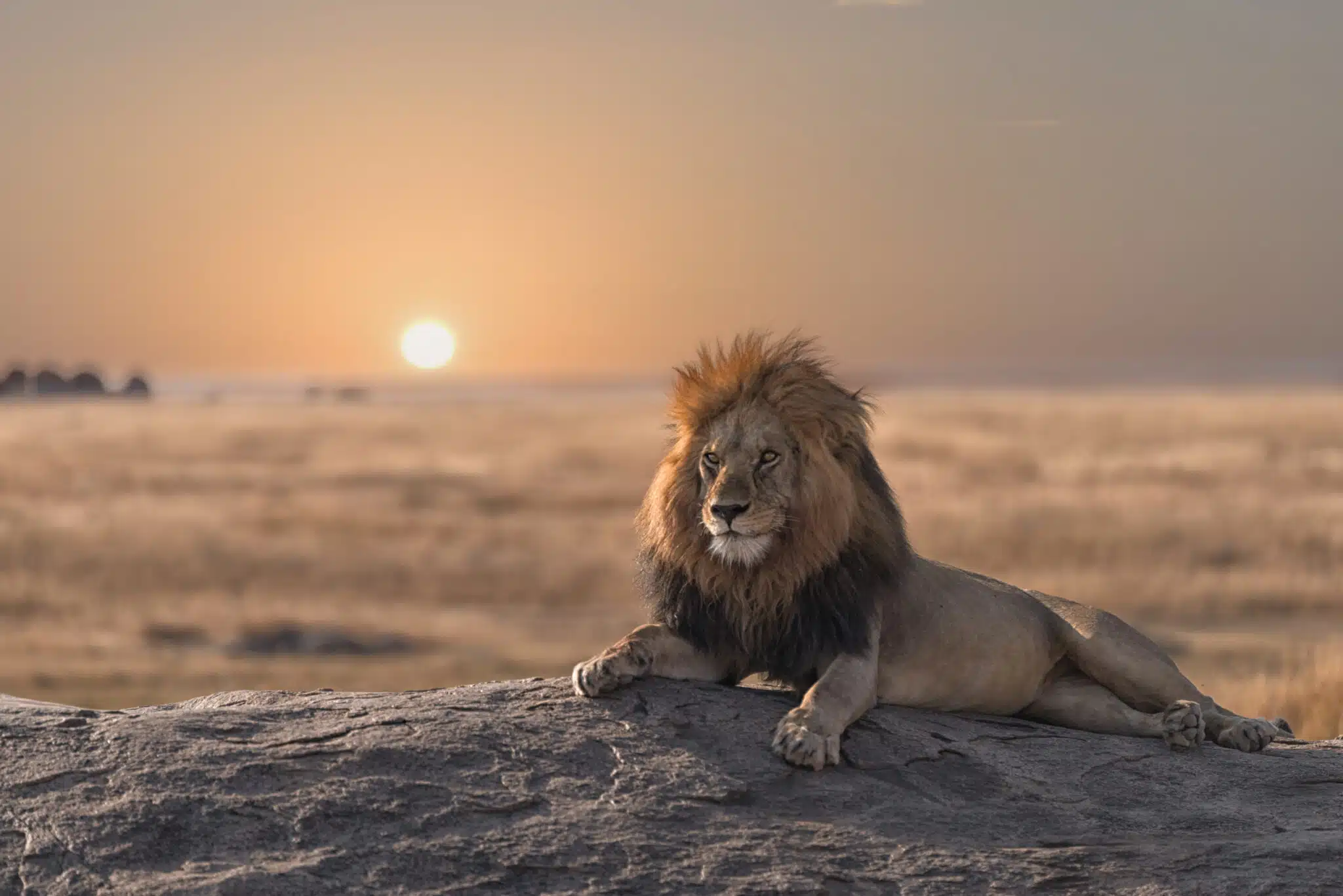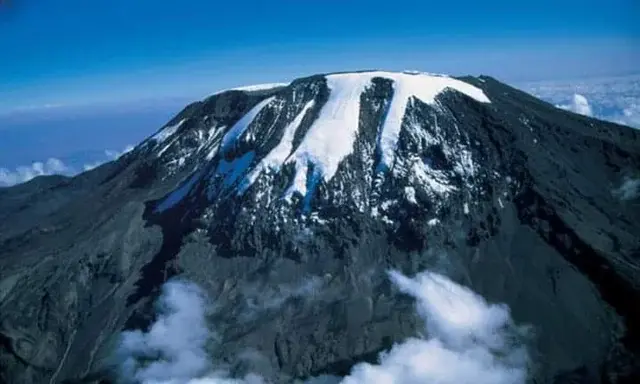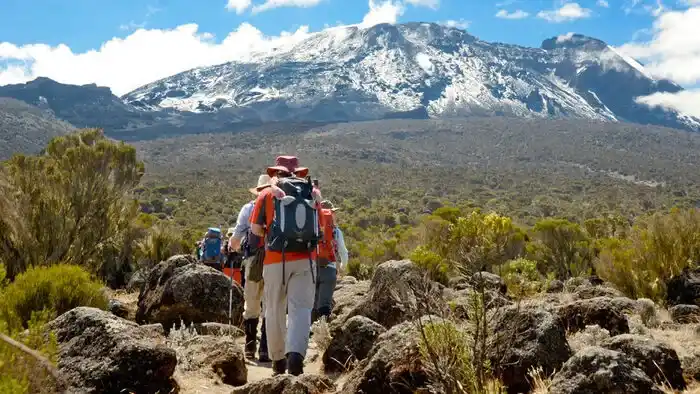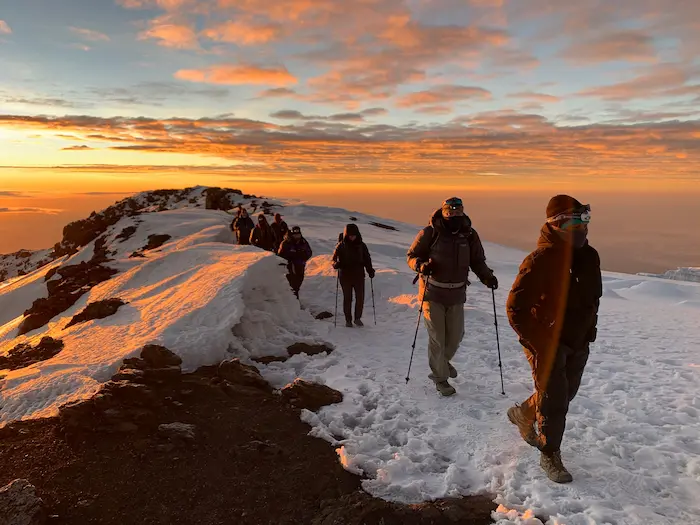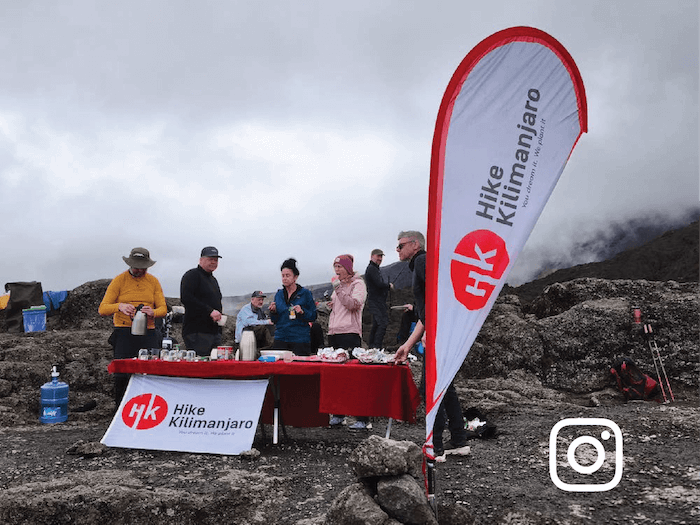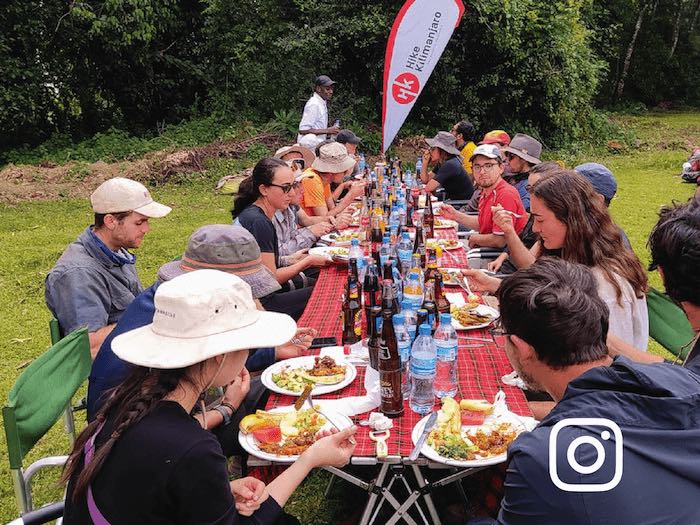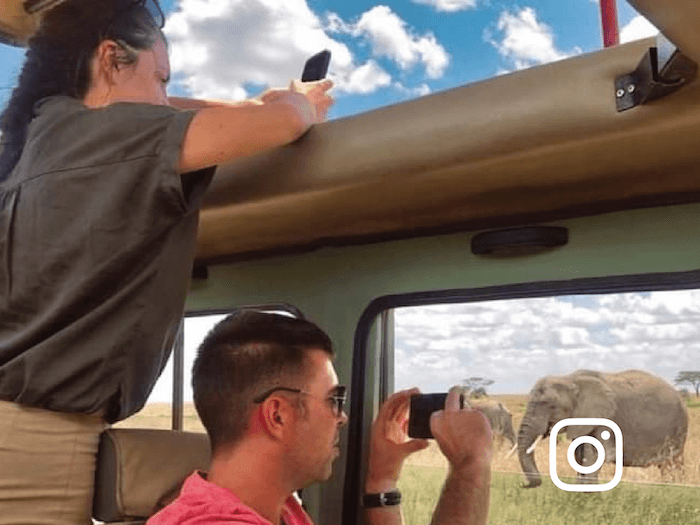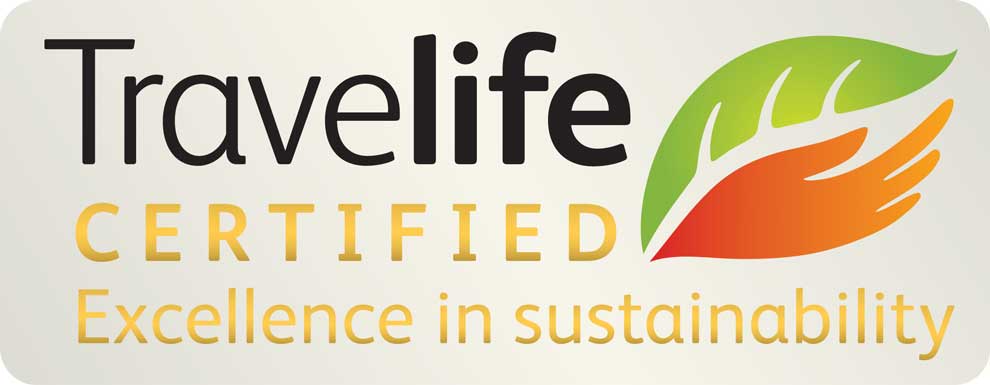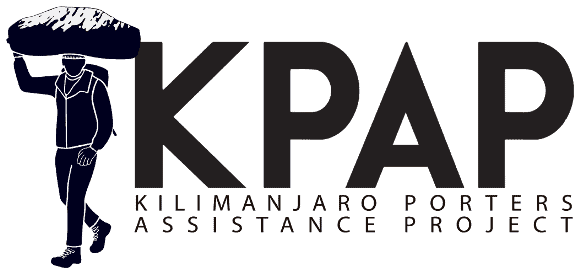Best Time to Climb Kilimanjaro - Things You Need To Know
Discover the best time to climb Mount Kilimanjaro for clear skies, safe trails, and unforgettable summit views. Plan your perfect trek today
At Hike Kilimanjaro, we’ve created this 2025 month-by-month guide to help you choose the best time to trek Africa’s highest peak.
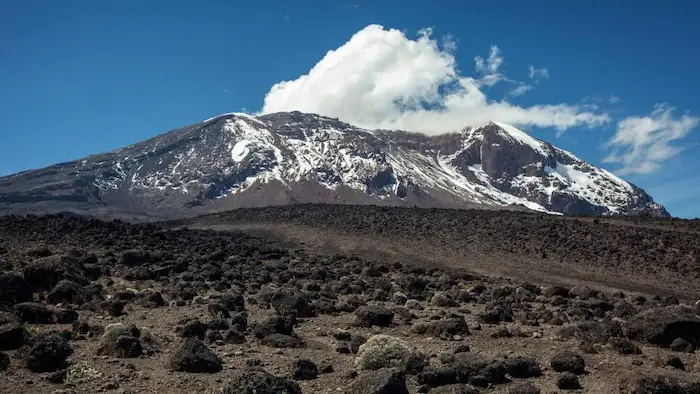
Best Time to Climb Kilimanjaro – A Complete Guide to All 4 Seasons
Overview:
You can climb Mount Kilimanjaro at any time of the year, but the most recommended months are December to early March and mid-June to October, when the weather is generally clearer, drier, and offers the best visibility. Below, we provide a detailed overview of what to expect in each season to help you plan the perfect summit attempt.
Choosing the best time to climb Kilimanjaro is one of the most important parts of your preparation. Although the mountain is open for trekking year-round, each month offers slightly different weather conditions, crowds, and climbing experiences. Some periods simply provide more favourable trekking conditions than others.
At Hike Kilimanjaro, we use years of guiding experience and seasonal knowledge to help climbers choose the most suitable time for their adventure. Our recommendations are based on thousands of successful summits, on-ground weather observations, and expert route planning.
If you have more questions after reading this guide or would like personalized advice, feel free to book a call with our team. We’re always here to help you plan your Kilimanjaro climb with confidence.

Which are the best months for climbing Kilimanjaro?
The best periods for climbing Kilimanjaro are:
- The short dry season between mid-December and March
- The long dry season between June and mid-October
The Short Dry Season: Mid-December to March
Mid-December through March is widely regarded as one of the most enjoyable times to climb Mount Kilimanjaro. While brief showers may occur, rainfall during this period is typically light, infrequent, and manageable, allowing for long stretches of clear skies and comfortable trekking conditions.
One of the highlights of this season is the chance to experience fresh snowfall near the summit, especially in January and February. The snowy landscapes are breathtaking and create a magical backdrop as you approach Uhuru Peak. However, please note that December often sees the heaviest snowfall, which, although incredibly beautiful, may reduce visibility from the summit during active snow days. Even so, many climbers love the quiet, pristine feel of trekking through fresh snow.
Another advantage of the short dry season is that summit temperatures tend to be milder compared to other times of the year, making summit nights slightly less harsh than during the colder shoulder months.
This period is also appealing because it is less crowded than the long dry season (June–October). With fewer climbers on the mountain, the trails and campsites feel more peaceful, offering a more private and immersive wilderness experience.
For those who prefer quieter routes during this season, it’s best to avoid the busier Marangu and Machame routes. Instead, consider choosing Lemosho, Shira, or especially the Northern Circuit, all excellent options for trekkers seeking solitude, beautiful scenery, and a more remote Kilimanjaro experience.
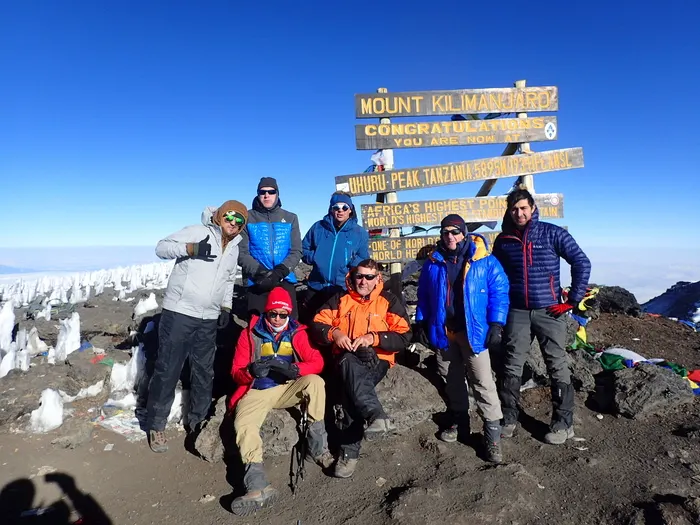
The Long Dry Season: June to Mid-October
June to mid-October is considered the prime climbing season on Mount Kilimanjaro. These months offer the most stable weather on the mountain, with minimal rainfall, clear mountain air, and excellent visibility across all climate zones. Trekkers are often rewarded with sweeping, uninterrupted views of the African plains and some of the crispest summit panoramas of the entire year.
Another major advantage of this season is the comfortable daytime temperatures in the rainforest zone. Compared to the warmer and more humid short dry season, June to October brings cooler, fresher air during the initial ascent, making the early days of hiking especially pleasant.
However, the long dry season also comes with a notable drawback: crowds. This is the busiest time of year on Kilimanjaro, mainly because it coincides with the long summer holidays in Europe and North America. Popular routes like the Machame and Marangu can experience high traffic during this period. If you’re seeking quieter trails, you may prefer climbing between December and March, when the mountain is noticeably less busy.
Coldest Summit Conditions: June & July
One important consideration for this season is the temperature at the summit. June and July are typically the coldest months on Kilimanjaro, with sharp winds and frigid night temperatures. While the skies are often beautifully clear, summit night can be especially demanding. For more comfortable summit conditions during the long dry season, we generally recommend planning your climb for August, September, or early October, when summit temperatures are slightly warmer, but the weather remains dry and stable.
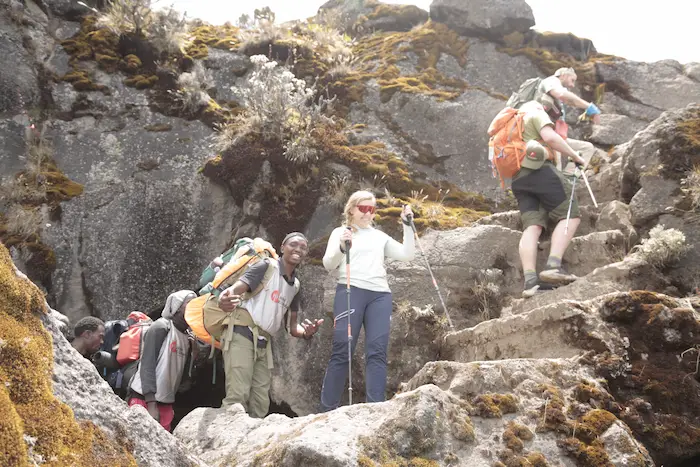
Can You Climb Kilimanjaro During the Rainy Season?
Yes, you can climb Kilimanjaro during the rainy seasons. Many trekkers still summit during these months. However, it’s important to understand that the overall experience will be very different from the dry seasons. November, in particular, is one of the quietest months on the mountain due to heavy rainfall, which is why many mountain teams use this period for volunteer clean-ups and trail maintenance.
Below is a detailed look at Kilimanjaro’s rainy seasons, along with helpful route recommendations if you’re considering a climb during the wetter months.
The Long Rainy Season: April and May
Late March, April, and May form Kilimanjaro’s long rainy season. This is when the mountain experiences its heaviest and most consistent rainfall, creating conditions that trekkers should carefully consider:
What to Expect
High humidity and heat in the rainforest zone, which many hikers find uncomfortable.
Frequent downpours, sometimes lasting several hours.
Muddy, slippery, and uneven trails, increasing the risk of slips or minor injuries.
Reduced visibility due to cloud cover, especially at lower elevations.
Advantages of Climbing During This Time
Despite the challenging weather, there are benefits:
Very few climbers on the mountain, making it an ideal period for those who want solitude.
Quieter campsites, providing a peaceful trekking experience.
Beautiful, lush vegetation in the rainforest zone due to the seasonal rains.
Should You Climb in the Long Rains?
You can safely climb Kilimanjaro during this time, especially with an experienced and well-prepared team. However, it is generally recommended only for:
Trekkers with previous hiking or camping experience
Travelers who prefer a peaceful, uncrowded mountain
Those who don’t mind wet-weather trekking
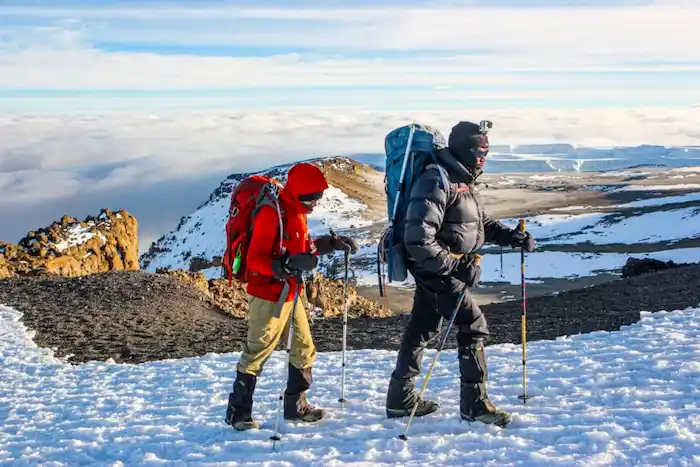
The Short Rainy Season: November to Mid-December
November is generally considered one of the least comfortable months to climb Mount Kilimanjaro, especially in the lower sections of the mountain. During this period, the short rainy season brings heavy downpours, particularly in the rainforest zone. These rains can sometimes extend into early December.
The rainfall creates a few challenges for climbers:
- Trekking in wet conditions often requires full rain gear.
- Slippery and muddy trails can make both the ascent and descent more difficult, especially near the end of the trek.
- The combination of rain and humidity can make the trail hot, steamy, and less enjoyable.
- Clouds, haze, and rain also reduce visibility, meaning you may miss some of Kilimanjaro’s most iconic views during parts of the climb.
Because of these factors, November and the first half of December are not considered ideal months for a Kilimanjaro expedition.
Despite this, the mountain remains climbable. The rainfall mainly affects the lower rainforest zone, and once you move higher, conditions can improve. The mountain is also at its quietest during this season, which some trekkers enjoy for a more peaceful experience.
You may also like to read Arwa Mrad’s Kilimanjaro journal, where she describes her experience hiking the Lemosho Route during the short rainy season.
For climbers whose schedule requires a trek during this period, we recommend considering the Rongai Route. Located on the northern slope of Kilimanjaro, this route receives significantly less rainfall than the western and southern routes, such as Lemosho or Machame, making it a more comfortable option during the short rains.
Should I Plan for a Full-Moon Summit?
Most Kilimanjaro trekkers begin their summit push at midnight, guided only by the soft glow of their headlamps. However, a fortunate number experience something truly magical: a full-moon summit ascent.
Climbing under a full moon transforms the entire experience. The moonlight reflects off the snow and volcanic landscape, creating a bright, silver-lit path that reduces the need for headlamps and offers surreal views of the mountain at night. Many climbers describe it as one of the most breathtaking and unforgettable moments of their trek.
If you’re interested in scheduling your Kilimanjaro climb to coincide with the full moon, we would be happy to assist you. Get in touch with us to arrange your full-moon summit experience!

So, When’s the Best Time to Climb?
- Best Overall Months: January–February, July–October
- Best for Fewer Crowds: June, November, early December
- Avoid: March–May (unless you’re ready for heavy rain)
Climb With Experts Who Know the Seasons
the best team
At Hike Kilimanjaro, we help you plan the perfect climb, choosing the best route and time for your goals. Whether you’re looking for a dry-season summit or a quieter adventure, our local experts have you covered.
Plan Smart. Climb Safe. Summit Strong.
Make your dream trip come true with Hike Kilimanjaro .

5/5
Based on 100+ reviews

4.9
Based on 60+ reviews
Customized Travel Proposal
At Hike Kilimanjaro, you can tailor your trip to your preferences. Our sample itineraries are customizable, and our specialists work with you to create your dream trip!
Related posts
These full and frank reviews are from travelers who have traveled with Hike Kilimanjaro previously. The reviews and experiences shown here are from reputable travel websites like TripAdvisor, Google, Facebook, and Trust Pilot, etc.
EXCELLENTVerified "This 3-day luxury safari combined with a Kilimanjaro hike exceeded all my expectations. "This 3-day luxury safari combined with a Kilimanjaro hike exceeded all my expectations. The accommodations were elegant and comfortable, and the guides were knowledgeable and friendly. The safari offered incredible wildlife photography opportunities, and climbing Kilimanjaro was a true test of endurance and strength, but the stunning vistas made it all worthwhile. An exceptional journey that I will cherish forever."Posted onVerified "My entire expectations were surpassed by climbing Kilimanjaro. "My entire expectations were surpassed by climbing Kilimanjaro. When one reaches Uhuru Peak, the sensation of accomplishment is indescribable. Because of the well-planned logistics, the amiable crew, and the breathtaking environment, the entire hike was easy and fun. It is a very remarkable event that I would gladly repeat. For adventurers, it's a must.Posted onVerified Tanzania truly offers a world-class experience. "My trek up Mount Kilimanjaro in Tanzania exceeded all my expectations. The stunning scenery, from lush rainforests to icy glaciers, was awe-inspiring. The local guides and porters were incredibly supportive and professional, ensuring a safe and enjoyable climb. It was challenging but incredibly rewarding. Tanzania truly offers a world-class experience for anyone looking to conquer Africa’s highest peak."Posted onVerified I feel accomplished and thankful. Kilimanjaro climbing was satisfying and difficult at the same time. Along the way, there was breathtaking natural splendour and a variety of diverse habitats. The guiding team's assistance was outstanding and got us through some really difficult times. After completing this amazing journey, I feel accomplished and thankful.Posted onVerified Thanks to their knowledgeable advice. From beginning to end, Hike Kilimanjaro offered a smooth and well-planned trip. Their staff made sure we were at ease and ready by being helpful and considerate. Thanks to their knowledgeable advice, climbing Kilimanjaro was difficult but incredibly gratifying. They are the ones I would most certainly pick again for excursions in the future.Posted onVerified "An amazing and well-planned adventure. "An amazing and well-planned adventure! The climb was fun and safe because of the team's experience and upbeat demeanour. I was encouraged by the journey and pleased to have reached the top of Africa.Posted onVerified Highly recommended this tour agency. Wonderful experience! We had a fantastic trip and enjoyed the entire team; we always felt very protected and taken care of. Highly recommended. I want to thank Keddy in particular; you were the best mentors .Posted onVerified "My Kilimanjaro trek was an extraordinary experience. "My Kilimanjaro trek was an extraordinary experience. The route was well-organized, and the staff was attentive and encouraging throughout the climb. The sense of accomplishment upon standing on the summit was overwhelming. The scenery, the challenge, and the sense of connection with nature made this hike truly special. I highly recommend it to anyone looking for a once-in-a-lifetime adventure."Posted onVerified Well Organized and Unforgettable. Hiking Kilimanjaro with a well-run tour company was an incredible experience. The crew was courteous and made sure we were fed, acclimated, and inspired at every stage. The support from porters and guides, as well as the companionship among hikers, helped to make the difficult days bearable. It was weird to be at the top above the clouds. Undoubtedly a life-long accomplishment I will always treasure.Posted onVerified Top notch safari The customer service is on point. Drivers were there to pick us up on time. We saw all the big 5 in Serengeti /Ngorongoro Crater.The accommodation booked Embalakai had great food and staff.Couldn't have asked for a better safari experience. Top notch
Speak to an Expert
Need assistance with your booking? Our friendly Tanzania-based expert team is here to help. Feel free to reach out with any travel-related questions or concerns.

Maxon

- WhatsApp +255 692 406 444

